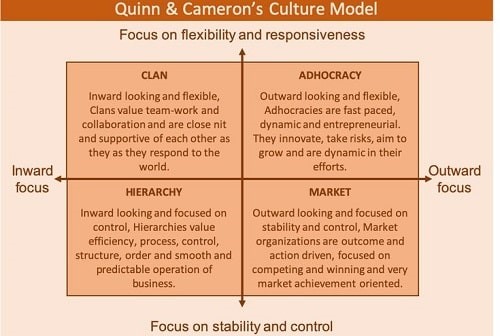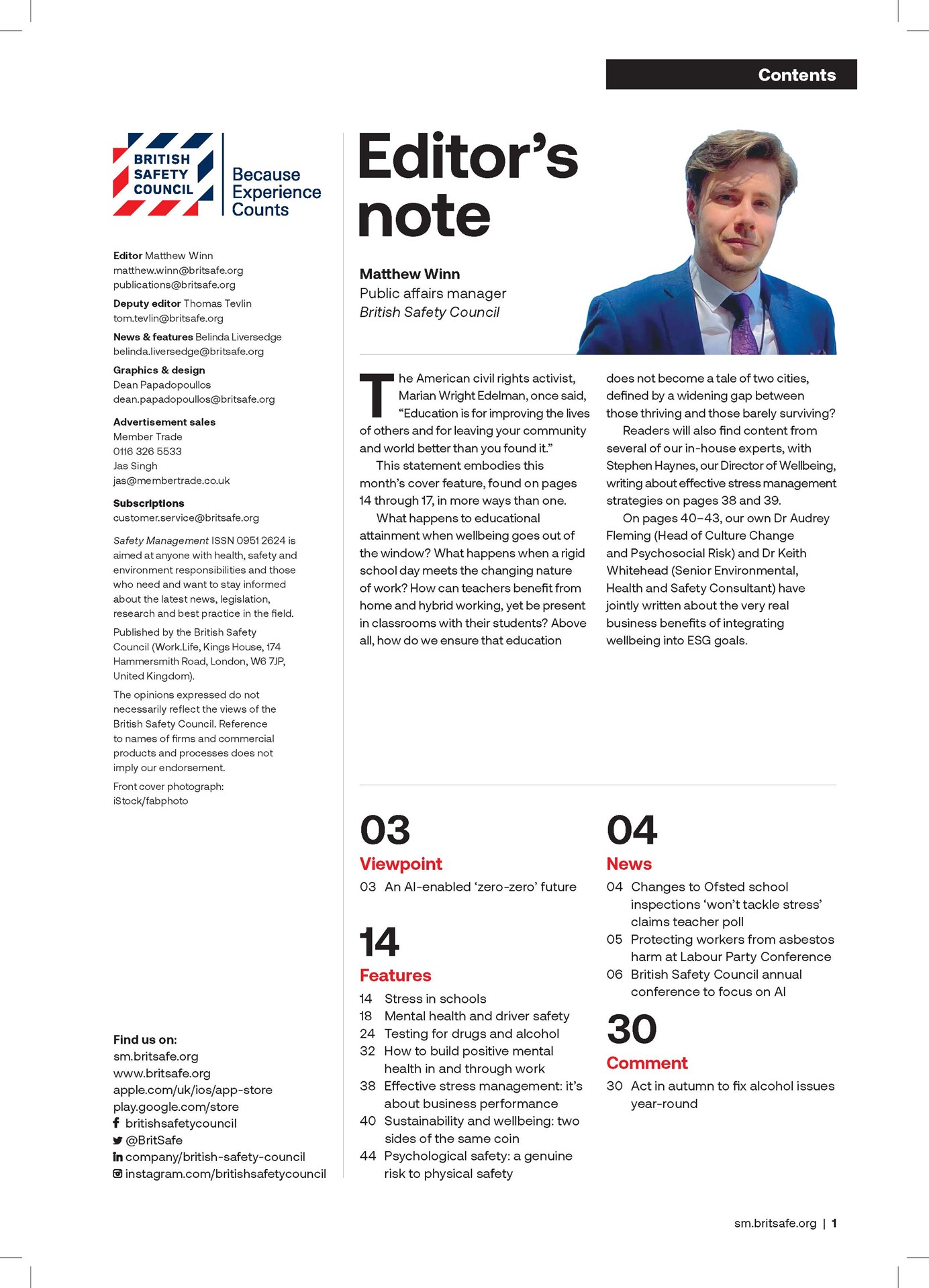Investing in measures to support worker wellbeing will be ineffective unless the company culture genuinely incorporates values like teamwork, involvement, flexibility and innovation.
Features
Company culture and wellbeing: a crucial link
For a moment, imagine what the perfect company would look like for you. You may be considering the benefits on offer, the brand values and mission, the job title, the fancy head office location or even access to numerous wellbeing benefits?
But consider the devastation for a moment, if you join this incredible company that ticks all these boxes, and yet has a burnout and negative culture that is affecting your colleagues’ wellbeing and potentially will affect yours too?
 Photograph: iStock
Photograph: iStock
We know that wellbeing needs to be holistic and cover all the facets. However, one of the concepts that many organisations don’t speak about is the powerful effect of company culture and how it will inevitably trump a wellbeing strategy.
So, let’s get into it. What is ‘culture’?
Forbes defines culture as “The shared values, belief systems, attitudes, and the set of assumptions that people in a workplace share”.
I like to refer to it as the way your employees feel on a Sunday night. Unfortunately, some employees experience actual terror, just considering coming into work the following day. This culture of fear is not a breeding ground for innovative, high-quality work, and I am sure it is not the culture anyone would want in their organisation.
Nevertheless, the latest ONS wellbeing statistics¹ in the UK reveal that:
- One in five adults in the UK reported some evidence of depression or anxiety in 2021 to 2022
- Around one in 15 adults in Great Britain feel lonely often or always
- Just under three-quarters of adults in Great Britain are fairly or very satisfied with their main job – suggesting that over 11 million people are unhappy at work.
So, with many companies now operating with a wellbeing strategy, what is going wrong?
Through our work at Invigorate Spaces, we see many companies operating with great building blocks for sustainable wellbeing. However, sometimes, when this strategy ‘hits the road’ it can end up taking a very different direction.
This may be because the strategy or policy is too generic, lacking specific examples of appropriate behaviours, or it could be because it is presented as the way forward without the input of colleagues to help co-create it, prior to implementation.
Irrespective of these factors, I believe the overarching reason that we see wellbeing strategies failing is because we do not pay due attention to the intrinsic company culture.
How do we even know our company culture?
Quinn & Cameron’s Culture Model₂ can be used to categorise the dominant culture of your organisation, which they say fits into one of four boxes: Hierarchy, Clan, Adhocracy and Market.
 Source: Quinn & Cameron's Competing Values Framework
Source: Quinn & Cameron's Competing Values Framework
It is worth mentioning that they all have their pros and cons and it’s not as simple as one culture is good or bad. So, let’s dig into the detail of each culture.
- Hierarchy – (aka Control) inward looking, focused on stability and control.
Pros: Employees experience greater sense of security and predictability.
Cons: Prioritising process over people.
- Clan – (aka Collaborate) inward looking but value responsiveness. Valuing teamwork and working together towards shared goals.
Pros: A happy team, that genuinely enjoys working together.
Cons: Inability to make tough decisions because people’s feelings are such a high priority.
- Adhocracy – (aka Create) outward looking, focused on being flexible and responsive. These organisations will grow more quickly but usually provide a less nurturing environment.
Pros: Employees motivated by breaking the mould.
Cons: Lack of stability as energy invested in new initiatives.
- Market – (aka Compete) outward looking and market-focused, they bond through winning the current marketplace.
Pros: Employees are driven and highly motivated.
Cons: Employees can experience stress and even burnout because of constant pressure.
In light of this information, imagine trying to roll out an effective wellbeing strategy without identifying first what the dominant culture of your organisation is?
Everything created in your wellbeing strategy will be affected by this culture – for example, in the following ways:
- Employee engagement: Depending on the dominant culture, employees may feel differing levels of engagement. Clan and adhocracy cultures, which emphasise collaboration, innovation and involvement, often lead to higher levels of engagement as employees feel valued and included in decision-making processes.
- Employee satisfaction: Cultures that prioritise employee wellbeing, such as Clan cultures, tend to lead to higher levels of job satisfaction. When employees feel like they’re part of a supportive community, they are more likely to be satisfied with their work.
- Stress levels: In cultures that prioritise control and hierarchy, employees may experience higher levels of stress due to rigid structures and strict adherence to rules and procedures. On the other hand, cultures that encourage flexibility and adaptability, such as Adhocracy cultures, may lead to lower stress levels as employees feel empowered to try new approaches and innovate.
- Innovation and creativity: Adhocracy cultures, which encourage innovation and risk taking, often foster a more dynamic and creative work environment. This can lead to greater innovation and competitiveness in the marketplace, contributing to the overall wellbeing and success of the organisation.
- Performance and productivity: Different cultures may impact organisational performance and productivity differently. Market cultures, for example, often prioritise results and efficiency, which can drive higher levels of performance. However, excessive focus on results without considering employee wellbeing can lead to burnout and decreased productivity in the long run.
Organisations that understand their dominant culture and its implications can therefore better foster a positive work environment that supports the wellbeing of their employees and contributes to the company’s overall success.
 Bex Moorhouse is founder and director of Invigorate Spaces. Photograph: Invigorate Spaces
Bex Moorhouse is founder and director of Invigorate Spaces. Photograph: Invigorate Spaces
It is also important to ensure that there is awareness that in large organisations, culture may vary team-to-team and manager-to-manager. So, employers need to ensure that they implement a consistent strategy across all levels of the organisation, and use change management practitioners to support the transition. This will avoid employees and managers getting lost in the process.
I am sure you will agree that work should be joyful, and the focus should always be on people, to ensure that they can meet and work happily and healthily, and are therefore in the best position to do great work and maximise the potential of those around them, too.
This article merely skims the surface of the impact of culture on wellbeing, but I hope it provides food for thought for employers and wellbeing practitioners to dig more into their own company culture, so they can create robust strategies that work to enhance wellbeing.
If we want to continue to attract and retain the best talent, a thorough understanding of culture is vital and will contribute to better wellbeing and, in turn, better company performance.
Bex Moorhouse is founder & director of Invigorate Spaces, a corporate wellbeing consultancy. Contact her at:
linkedin.com/company/invigorate-spaces-ltd
https://www.facebook.com/invigoratespaceshttps://www.facebook.com/invigoratespaces
References
2. Quinn & Cameron – Competing Values Framework
FEATURES

Why menstruation support matters at work
By Deborah Garlick, Menstruation Friendly by Henpicked on 03 December 2025
Although forward-thinking organisations are increasingly taking action on menopause awareness and support at work, attention is now turning to menstrual health as the next essential step in building an inclusive, equitable and high-performing workplace.

Neurodiversity at work: getting started on creating a supportive environment for neurodivergent workers
By Andy Hooke CMIOSH Chartered health and safety consultant on 03 December 2025
Creating a neuroinclusive workplace brings many benefits, including making neurodivergent employees more comfortable about seeking help and support from managers and colleagues, and there are some simple ways of getting started with the process.

Human-centred technology for better work design: rethinking musculoskeletal disorder prevention
By Cam Stevens, Pocketknife Group on 03 December 2025
Although technologies like computer vision analysis, machine learning and wearable sensors are increasingly being used to identify and assess the causes of work-related musculoskeletal disorders (MSDs), it’s essential to consider data relating to all aspects of work design when seeking to reduce MSDs in the workplace.



